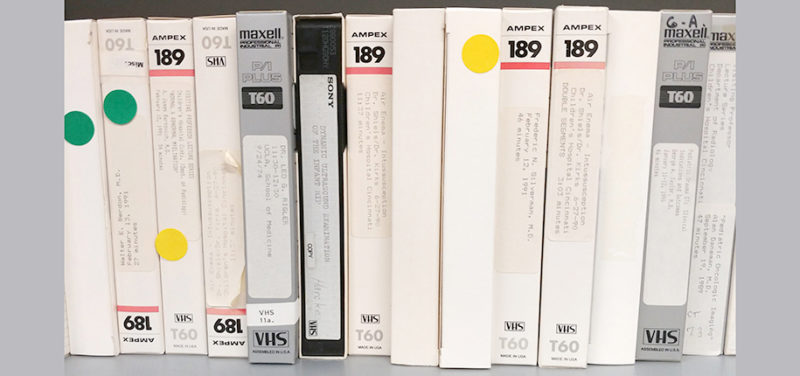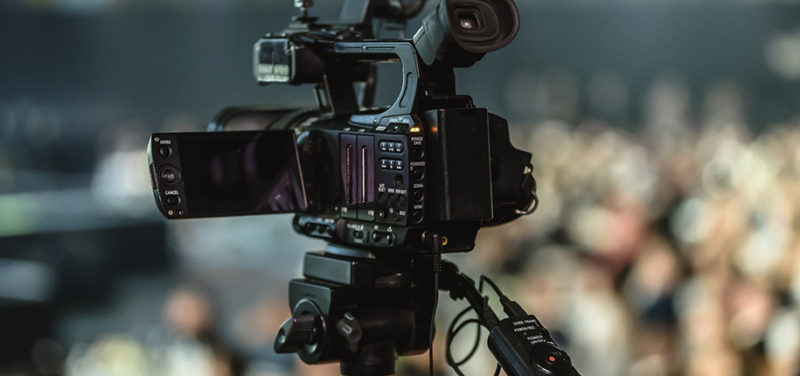
Are you old enough to remember when there was a Blockbuster video store? Remember when you had to rewind the VHS cassette, so that the next person to watch the video can view the movie at the beginning instead of the end or middle? When someone in our Radiology Department asks me to “tape” a meeting or lecture, I would reply back to them, don’t you mean “record”?

About twenty-five years ago our Radiology lectures and presentations were recorded on VHS tapes. DVD’s was still in its infancy and a DVD player costed $250 and up. Cincinnati Children’s hospital is an academic institution and our Radiology Department would invite guest speakers, experts in their field of radiology imaging, to give lectures to our faculty and staff.

Back then, when someone wanted to record or “tape” a medical lecture, it was a simple setup of a camcorder placed in the middle of the room and aimed at the screen. The camcorder would “tape” the screen presentation (recorded on a small cassette tape) and record the audio on its on-board microphone, which recorded everything (audience and speaker). I consider this the “budget” method, because the department didn’t have enough in the budget to afford a professional recording. It was not uncommon to see a silhouette of a person walking in front of the screen, just like someone illegally recording a movie in a theater. It was an expensive venture to have a lecture or meeting professionally recorded.
If the hospital department had money to spend or if it was a hospital wide presentation, there would be a professional videographer and two camcorders (one aimed at the screen and the other aimed at the speaker), plus an audio engineer to record the speaker instead of the background noise. The “taped” presentation would be edited in post-production and finalized on a master VHS copy. But, not every department had thousands of dollars in their budget to do this on a regular basis.
 Photo: Small section of our VHS taped lectures, once filled a whole shelf wall in our Radiology Silverman Library.
Photo: Small section of our VHS taped lectures, once filled a whole shelf wall in our Radiology Silverman Library.
A ‘taped’ presentation is a great learning tool for those that could not make it to the lecture or meeting. They would view the “taped” lecture at their own time and leisure. This is especially true for our Radiology Faculty, Fellows and medical students who would use this tool to aid in their continuing education. A majority of visiting professors that came to give a medical lecture in our Radiology Department were more likely to get “taped”.
The downside of VHS recordings was that the quality wasn’t so great compared to what we have today. Depending on the length of the recording, a one hour recording would be considered High Quality. The longer the recording on a VHS tape, the less detail it will have. The cassette weighted around 7 ounces and equipment needed to watch them were big and bulky. VHS tapes would take up allot of space also, our Radiology Department once had a small library of tapes that stretched from one end of a room to the other.
Once digital technology got better and better, there was no need to have a bulky equipment in the middle of the room. There are digital recorders now that can record directly from the projector or from the PC workstation. No need for a library size room to store the presentations, they could be stored on DVD discs or on a server that users can login. Instead of using a VHS player and TV monitor, recorded lectures/meetings can be viewed on a LCD monitor, tablet or cell phone. No more of the time-consuming winding and re-winding to get to a specific timeline on the tape, these days one just needs to swipe a finger to get to the desired spot on the video. Those Blockbuster stores we use to have, they’ve been replaced by Redbox kiosks and online providers, such as Netflix, Hulu, etc.